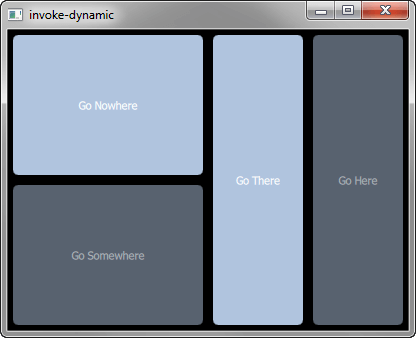Qt SCXML Invoke Example (Dynamic)

Invoke Example (Dynamic) demonstrates how to use the <invoke> element with generated nested state-machines, where the SCXML file is dynamically loaded. The <invoke> element is used to create an instance of an external service.
Running the Example
To run the example from Qt Creator, open the Welcome mode and select the example from Examples. For more information, visit Building and Running an Example.
Invoking the State Machine
In statemachine.scxml, we specify a state machine with the name Directions of type http://www.w3.org/TR/scxml/ to invoke:
<scxml
xmlns="http://www.w3.org/2005/07/scxml"
version="1.0"
name="Directions"
initial="anyplace"
>
<state id="anyplace">
<transition event="goNowhere" target="nowhere"/>
<transition event="goSomewhere" target="somewhere"/>
<state id="nowhere"/>
<state id="somewhere">
<invoke type="http://www.w3.org/TR/scxml/">
<content>
<scxml name="anywhere" version="1.0">
<state id="here">
<transition event="goThere" target="there"/>
</state>
<state id="there">
<transition event="goHere" target="here"/>
</state>
</scxml>
</content>
</invoke>
</state>
</state>
</scxml>Dynamically Loading the State Machine
We link against the Qt SCXML module by adding the following line to the invoke-dynamic.pro file:
QT += qml scxml
We dynamically create the state machine, as follows:
import QtScxml 5.8 MainView { stateMachine: directions.stateMachine StateMachineLoader { id: directions source: "qrc:///statemachine.scxml" }
Files:
© 2017 The Qt Company Ltd. Documentation contributions included herein are the copyrights of their respective owners. The documentation provided herein is licensed under the terms of the GNU Free Documentation License version 1.3 as published by the Free Software Foundation. Qt and respective logos are trademarks of The Qt Company Ltd. in Finland and/or other countries worldwide. All other trademarks are property of their respective owners.
